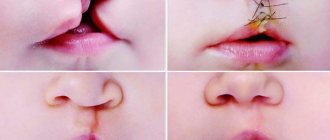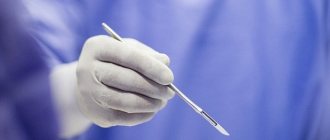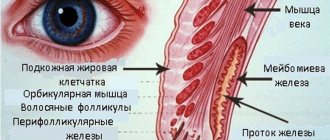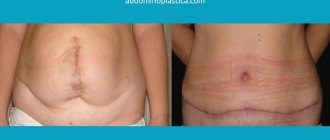Indications and contraindications for platysmoplasty
Platysmoplasty surgery is not performed for health reasons or to cure something. It has one goal - to restore the aesthetics and youth of the face and neck, so it can be performed on anyone who has no contraindications to surgical operations. Depending on the characteristics of the changes, the surgeon will choose the optimal method of operation.
Depending on the severity of visible changes in neck tissue, several types are distinguished:
- Minimal atrophy and ptosis - you can do without surgery by choosing conservative correction methods;
- Laxity is noticeable in the lateral parts of the neck - lateral platysmaplasty is indicated;
- Decreased tone of the subcutaneous muscle with noticeable hypertrophy of its inner edges - medial platysmaplasty is performed;
- Noticeable prolapse of soft tissues along with low muscle tone and laxity of the neck, leading to the formation of folds and wrinkles - combined operations are performed.
Neckplasty is indicated if:
- A “double chin” appeared;
- There is a very noticeable sagging of the skin of the neck, a clear angle between the lower part of the chin and the neck is lost, the oval of the face has changed;
- Deep wrinkles and longitudinal skin strands in the middle part of the neck are noticeable, worsening the appearance and adding age;
- There is a small chin combined with a massive neck, creating an aesthetic imbalance.
A personal desire to undergo surgery is also one of the indications. If the client wants to correct even the most minor changes and undergoes the operation safely, the surgeon will not refuse him this opportunity.
Surgery on the subcutaneous muscle of the neck cannot be performed if:
- Acute general infectious diseases or exacerbation of chronic ones at the time of surgery;
- Tumors of any location;
- Systemic pathology of connective tissue, autoimmune diseases;
- Pathologies of hemostasis;
- Diabetes mellitus;
- Allergies to drugs for anesthesia;
- Decompensated pathology of the heart, lungs, liver or kidneys;
- Pustular, eczematous skin changes at the site of proposed skin incisions;
- Too thin skin on the neck.
Platysmaplasty is also contraindicated for minors, pregnant women and nursing mothers, and people with mental illness. Against the background of smoking, it can result in complications, so the issue of bad habits is discussed in advance.
How is cervicoplasty performed?
If preoperative studies have not revealed any contraindications, then proceed directly to the operation itself. It should be noted that surgical plastic surgery of this area requires great skill and experience of the surgeon. Since this area contains a large number of nerves and blood vessels, there are the thyroid and parathyroid glands, damage to which can lead to irreversible consequences and even disability.
Most often, neck surgery is performed under general anesthesia. Incisions are made under the chin and behind the ears along the lines that the surgeon has previously marked. By tightening the skin, the surgeon removes fat deposits and excess skin. It is then sewn together like shoelaces, thus creating a muscle corset. The skin is placed over the muscle tissue and secured with sutures. Drainage is installed, if necessary, and the wounds are closed. If drainage is not needed, then the seams are made of biodegradable threads.
For better results, neck plastic surgery is complemented by reconstruction of the subcutaneous muscle of the neck (platysmoplasty). Platysmaplasty is performed in more severe cases, when it is impossible to straighten deep wrinkles on the neck. Also, sometimes cervicoplasty creates a feeling of tightness of the facial skin. To avoid these negative phenomena, the platysmoplasty method is used, in which not only the skin, but also the subcutaneous muscle tissue is tightened.
This method allows you to achieve results that cervicoplasty is not capable of. With platysmoplasty, the surgeon makes incisions behind the ears and under the chin, reconstructs and fixes the subcutaneous muscle of the anterior neck, which allows for good results for many years.
Platysmoplasty is performed using an endoscope. It ensures minimal trauma and a complete absence of scars. In addition, this method eliminates postoperative complications or makes their manifestation insignificant.
Surgery usually lasts from an hour to two.
Preparing for surgery
Platysmaplasty lasts up to two hours and always requires general anesthesia, so preparation for it must be of high quality. After a conversation with a plastic surgeon and anesthesiologist, the patient is sent for an examination, including blood and urine tests, tests for HIV, hepatitis, syphilis, fluorography, ECG, coagulogram, and consultations with specialists. The therapist gives his opinion on the safety of the upcoming treatment after eliminating all possible contraindications.
Two weeks before surgery, blood thinners, hormones, and vitamin E are discontinued. Smokers should give up the bad habit at least temporarily, as it can cause regeneration problems and even complications.
At the appointed time, the patient comes to the clinic with the results of all the tests completed, the surgeon examines him again, explains the technique of the upcoming correction, and models the final result. The anesthesiologist finds out all the information regarding allergies, past experience with anesthesia, and the nature of medications constantly taken.
Methods of platysmoplasty and its features
When performing a neck lift, the surgeon connects parts of the subcutaneous muscle in such a way as to eliminate excess skin, hide wrinkles, and improve the contours of the chin. In other cases, it pulls the muscle upward, to the behind-the-ear areas. The operation can be supplemented by lifting the lower half of the face, or combine several techniques for plastic surgery of the subcutaneous muscle. This intervention is considered one of the most technically difficult in plastic surgery.
The effect of an operation is not always easy to predict, because it depends not only on the skills and qualifications of the surgeon, but also on individual anatomical features, the patient’s age, the regenerative abilities of his tissues, concomitant pathology and other factors. Platysmaplasty gives long-term results - up to 10-15 years, but as you age, wrinkles may return again.
A neck lift requires the plastic surgeon to pay attention to certain anatomical and physiological features of the patient’s face and neck. The severity of the angle of the lower jaw and chin, the elasticity of the skin, the volume of fatty tissue in the neck, the degree of ptosis of soft tissues, and the predisposition to keloid scars must be assessed.
Platysmaplasty includes several successive stages:
- Treating the skin with an antiseptic, applying markings;
- Skin incisions depending on the chosen technique (under the chin, behind the ears, on the neck);
- Removing excess skin and fat, suturing the inner edges of the muscle, fixing the outer parts, etc.;
- Coagulation or ligation of bleeding vessels, applying a cosmetic suture, treating with an antiseptic, covering wounds with a sterile bandage.
Plastic surgeons have developed several methods of platysmaplasty, which can be used independently or combined:
- Removal of fat deposits by liposuction;
- Insulated plastic;
- Cervicoplasty;
- Radical platysmoplasty;
- Complex facial rejuvenation surgery.
Liposuction surgery is performed from an incision up to four centimeters long. Using special small-diameter tubes, the surgeon uses a vacuum to remove excess fat deposits, correcting the contour and size of the chin area. The operation is indicated for a pronounced “double chin”.
Isolated platysmaplasty is considered one of the most gentle methods, but one cannot expect a very noticeable effect from it. The operation is indicated in the initial stages of soft tissue ptosis. If there are clearly visible changes in both the neck and the face, then after isolated plastic surgery the patient runs the risk of experiencing some disharmony, so it is more advisable to choose combined methods of neck and chin plastic surgery.
Complex anti-aging surgery is indicated for a combination of age-related changes in the face, chin and neck. The operation includes platysmaplasty, facelift, chin correction with implants or lipofilling, liposuction and other techniques in various combinations depending on the patient's needs.
Cervicoplasty consists of removing skin folds from the chin area, lower third of the face and neck. Cervicoplasty is especially effective for severe sagging and sagging skin of the face and neck. A skin incision is made behind the ears or under the chin, loose skin is removed and the remaining skin is stretched.
The radical method of platysmoplasty is the most effective. It can be implemented using the lateral or medial method, as well as a combination of them. Deep platysmaplasty involves excision of fat deposits and a combination of lateral and medial techniques. After surgery, it is mandatory to wear a support bandage.
With lateral platysmaplasty, the subcutaneous muscle is peeled away from the skin, excess fat is excised, after which the surgeon makes an incision near the temple and leads it with a circumflex line behind the ear. The subcutaneous neck muscle is pulled upward and fixed behind the ears, giving the face a tighter and more youthful appearance.
Medial platysmaplasty is necessary for significant diastasis of the inner edges of the subcutaneous muscle. The surgeon makes an incision in the chin area, then tightens the muscle inward, sharpens the angle between the neck and chin, and connects the edges of the subcutaneous muscle in the middle of the neck. Skin sutures must be very neat and precise. The medial platysmaplasty technique can be combined with other techniques to improve the aesthetics of the face and neck.
medial platysmaplasty
When used independently, lateral and medial plastic techniques cannot provide an ideal angle between the neck and chin, so they are usually used in combination. This approach makes it possible to correct this zone even in those people who have crossed the fifth decade of life and have acquired visually pronounced age-related changes.
Liposuction of the withers and cervical hump, lifting effectiveness
A withered neck can be the result of a number of medical conditions (Cushing's disease, steroid use, obesity, etc.). The most common cause is extreme weight gain. By withers we mean exactly that hump in which there are fatty deposits - this should not be confused with osteochondrosis.
The withers are also called “widow’s hump.” This is a rather dangerous and unpleasant phenomenon that can spread further to the neck area and reach the ears. Liposuction of the withers on the neck can completely remove subcutaneous fat and restore normal appearance.
As a result, the following positive changes are observed:
- normal blood circulation;
- normalization of metabolism and hormonal levels;
- smoother contour of the neck and back;
- no restrictions in movements.
Ultrasonic liposuction is usually performed. This procedure can completely remove even large deposits of fat at the withers. Classic or tumescent liposuction can also be performed.
The operation is performed under general anesthesia, and the adipose tissue of the withers, removed from the body, does not perform any important functions in the body, but, on the contrary, blocks them. Therefore, removing fat from the withers implies a quick recovery of the body after surgery.
Neck skin tightening
Neck skin tightening or facelift is an operation that allows you to get rid of a complex of causes for a sagging neck. As a rule, weakening of the neck muscle tone is only one of the indicators - you also need to take care of, for example, the cheeks. Neck skin tightening involves comprehensive fat removal and skin tightening.
Skin tightening on the neck is very effective and is in demand among women aged 40-55 years. The operation is performed under general anesthesia, and recovery after it is quite quick.
Features of liposuction of the cervical hump
A hump in the neck is a problem for many women over 40. This problem arises due to the accumulation of fat cells in the area of the seventh cervical vertebra. This problem is often confused with a “dower’s hump,” but the difference is significant: a widow’s hump is a consequence of taking medications or extreme weight gain, while a cervical hump occurs for a number of other, more natural reasons:
- osteoporosis and osteochondrosis;
- sedentary lifestyle;
- prolonged stay in the wrong position (driving, at the computer, etc.).
A great way to get rid of a cervical hump if exercise does not help is liposuction. This operation is performed under general anesthesia and has a number of contraindications that can only be clarified and identified by the attending physician.
The effect of liposuction of the cervical hump is always pleasantly surprising: there is an improvement in well-being, ease and ease of movement, and discomfort disappears.








